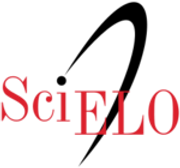Potencialidades de la Iglesia Huamán como elemento estructurador del fortalecimiento de la identidad local
DOI:
https://doi.org/10.21754/devenir.v6i12.747Palabras clave:
Iglesia de Huamán, identidad local, patrimonio monumentalResumen
En este artículo se analizan las potencialidades que posee la iglesia de Huamán como elemento estructurador de la identidad local, puesto que mediante la apropiación social del patrimonio una pluralidad de individuos se reconoce como perteneciente a un mismo pueblo y territorio. Así, se fortalece la identidad y se genera un sentido de pertenencia; por tanto, la apropiación social del patrimonio también puede ser entendida como el fundamento que permite construir la unidad en la diversidad y, por ende, el generador de nuevas identidades. El 89,8 % de la población considera que la iglesia de Huamán presenta una suma de potencialidades, tanto históricas como patrimoniales y arquitectónicas, que le permiten convertirse en un eje estructurador de la identidad local y la memoria colectiva del distrito. Esta iglesia congrega muchas personas, no solo por la parte religiosa, sino por la diversidad de actividades que allí se producen; estas potencialidades hacen que la misma sea un elemento dinámico y catalizador de la identidad local del distrito. De esta manera, la identidad es el viejo territorio del patrimonio. Entre los objetivos reconocidos por la mayor parte de actuaciones patrimoniales que se realizan en estos ámbitos, está la construcción de las identidades locales como la autodefinición de un nosotros.
Descargas
Citas
Camarena, M. y Tunal, G. (2009). La religión como una dimensión de la cultura. Nómadas. Revista Crítica de Ciencias Sociales y Jurídicas, 22(2), 1-15.
Christian, W. (1978). Religiosidad popular. Estudio antropológico en un valle español. Madrid: Tecnos.
Connor, D. (1997). Participación pública: un manual. Cómo prevenir y resolver los conflictos públicos. Victoria, British Columbia, Canadá: Development Press.
Correa, J. (2005). Las iglesias en los pueblos de indios del valle de Moche. Revista Waka XXI(3), 83-133.
Durkheim, E. (1967). Sociologie et philosophie. París: Presses Universitaires de France.
Durkheim, E. (1982). Las formas elementales de la vida religiosa. Madrid: Akal.
Fonseca, C. (2005). Territorios e imaginarios entre lugares urbanos: procesos de identidad y región en ciudades de los Andes. Manizales: Editorial Universidad de Caldas.
García, N (1999). Los usos sociales del Patrimonio Cultural En E. Aguilar (Coord.), Patrimonio Etnológico. Nuevas perspectivas de estudio (pp. 16-33). España: Junta de Andalucía, Instituto Andaluz del Patrimonio Histórico
Gómez, L. (2009). Documentos internacionales de conservación y restauración. México D. F.: Instituto Nacional de Antropología e Historia (INAH) y Consejo Nacional para la Cultura y las Artes (Conaculta).
Marcos, J. (2005). La tradición, el patrimonio y la identidad. Badajoz: Universidad de Extremadura.
Mesa, J. (2011). El Barroco Mestizo en la Costa del Perú: La Iglesia de Santiago de Huamán en Trujillo. España: GRISO-Universidad de Navarra/Fundación Visión Cultural.
Muñoz, A. (2010). Arquitectura y Memoria. El Patrimonio Arquitectónico y la Ley de Memoria Histórica. Escuela de Arquitectura de Madrid.
Pérez-Agote, A. (2016). La religión como identidad colectiva: las relaciones sociológicas entre religión e identidad. Papeles del CEIC, International Journal on Collective Identity Research, (2).
Prat i Carós, J. (1989). Los santuarios marianos en Cataluña: una aproximación desde la etnografía. En C. Álvarez et. al. (Coords.), La religiosidad popular II Vida y muerte: la imaginación religiosa (pp. 211-252). Barcelona: Anthropos.
Prats, L. (2004). Antropología y Patrimonio. Barcelona: Ariel Patrimonio.
Pujadas, J. (1993). Etnicidad. Identidad cultural de los pueblos. Salamanca: Eudema.
Ruíz, A. (2001). Quinta conferencia interparlamentaria de minería y energía para América Latina (CIME, 2001). Serie Seminarios y Conferencias, LC/L.1642-P, Comisión Económica para América Latina y el Caribe. Santiago de Chile: Naciones Unidas.
Seguel, R., Benavente, A. y Ossa, C. (2010). Restauración de imágenes de culto: propuesta teórica metodológica para la intervención de objetos de devoción. Revista Conserva, (47), 47-65.
Tilly, C. (1990). Coercion, Capital, and European States, AD 990-1990. Cambridge, Mass., EE. UU.: B. Blackwell.
Vega, M. (2009). Historia Documental de Trujillo del Perú. Blogspot. Recuperado de http://historiadocumentaldetrujillodelperu.blogspot.com/2009/02/un-documento-del-siglo-xvii-par-ala.htmlw
Descargas
Publicado
Cómo citar
Número
Sección
Licencia
Los artículos publicados por DEVENIR pueden ser compartidos a través de la licencia pública internacional Creative Commons: CC BY 4.0. Permisos lejos de este alcance pueden ser consultados a través del correo revistas@uni.edu.pe











